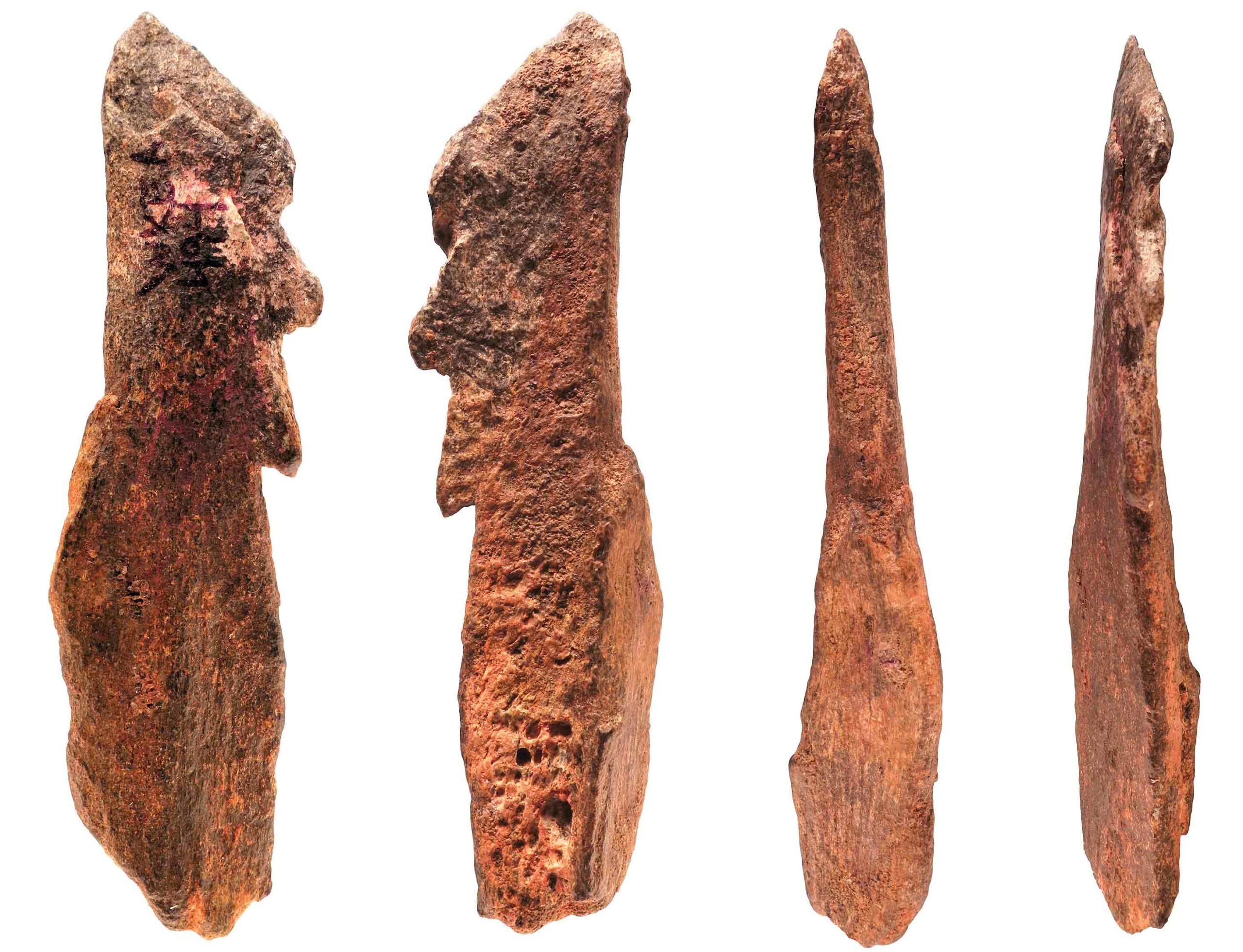HAIDERSHOFEN, AUSTRIA—A quartzite hammerstone found at the site of Lehberg in Austria could bear the handprint of an ancient human ancestor that lived 500,000 years ago. Lehberg has offered up Acheulean axes and a phallus-shaped item that's splattered in ochre, but the new find ties the activities of Homo erectus in Europe to the hand painting done by its descendants 450,000 years later in caves like Rouffignac. Stereoscopic light microscope imaging of the hammerstone showed an ochre outline that likely corresponds to the ball and thumb of an ancient right-handed hominin. The faint stain was likely left when the long extinct user held the stone while grinding ochre with water to make a paint.
Ochre Handprint of Homo erectus Found in Austria
News December 23, 2013
Recommended Articles
Digs & Discoveries July/August 2025
The Bone Toolkit

Digs & Discoveries November/December 2021
China's New Human Species

Digs & Discoveries January/February 2021
The Bone Collector

Digs & Discoveries September/October 2018
A Very Long Way to Eat Rhino

-
Features November/December 2013
Life on the Inside
Open for only six weeks toward the end of the Civil War, Camp Lawton preserves a record of wartime prison life
 (Virginia Historical Society, Mss5.1.Sn237.1v.6p.139)
(Virginia Historical Society, Mss5.1.Sn237.1v.6p.139) -
Features November/December 2013
Vengeance on the Vikings
Mass burials in England attest to a turbulent time, and perhaps a notorious medieval massacre
 (Courtesy Thames Valley Archaeological Services)
(Courtesy Thames Valley Archaeological Services) -
Letter from Bangladesh November/December 2013
A Family's Passion
A father and son watched over a site in northeastern Bangladesh for decades before archaeologists came to see what was there
 (Courtesy Reema Islam)
(Courtesy Reema Islam) -
Artifacts November/December 2013
Moche Ceremonial Shield
 (Courtesy Lisa Trever, University of California, Berkeley)
(Courtesy Lisa Trever, University of California, Berkeley)

